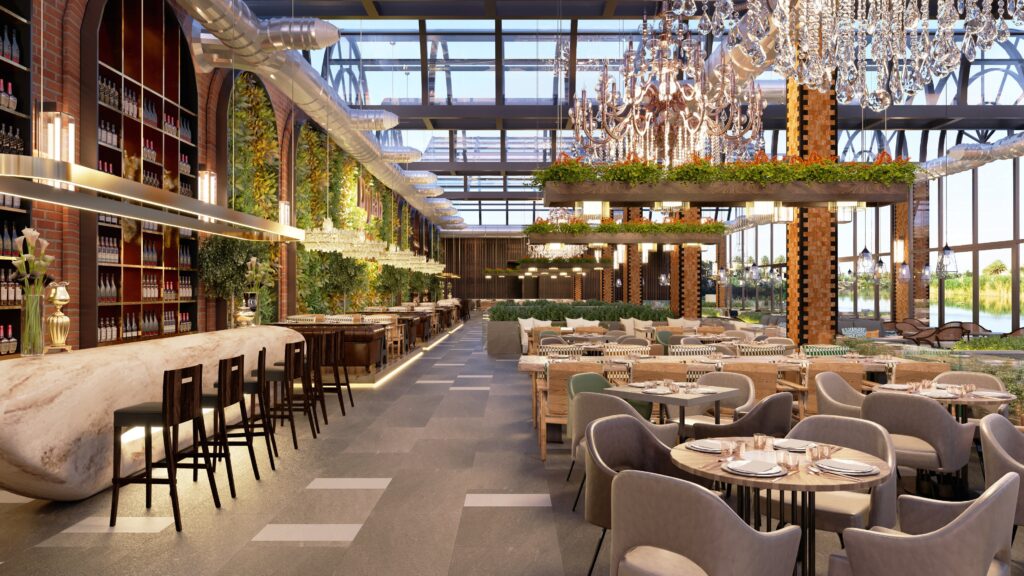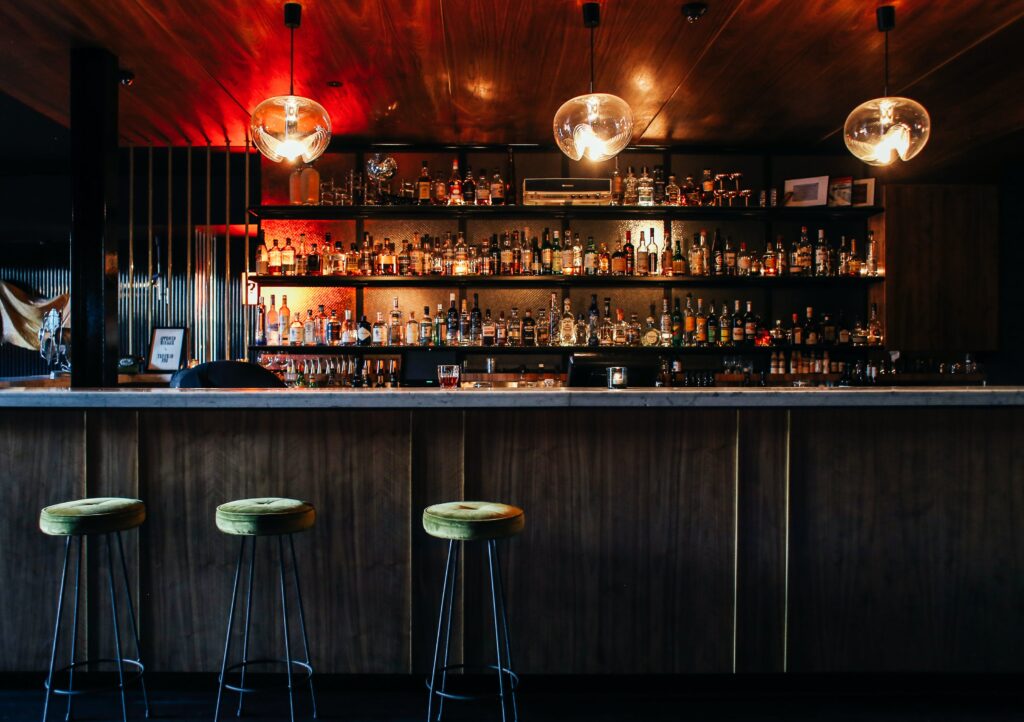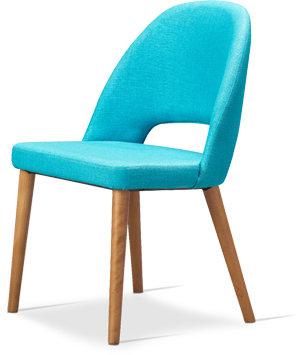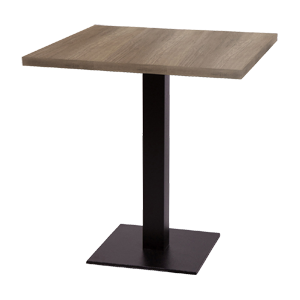
Tabilo has been supplying furniture to restaurants and cafes for years, and we’ve seen plenty of mistakes made by owners.
Whether it is overcrowding rooms with as many tables as they can squeeze in, or buying furniture in the wrong shape or of lesser quality, there are lots of ways bad table and seating choices can hurt a restaurant’s profitability.
We want every restaurant to have the chance to succeed. Below we’ve described seven common mistakes and how your restaurant can avoid them:
Mistake #1: Placing tables and chairs too close together
More customers mean more sales. It is natural to want to fit as many tables into your restaurant as possible. But putting them too close means you are sacrificing customer comfort as well as making the job of your service staff harder, and even compromising on safety.
You probably need more space between your seats than you realise. Consider that you need all of the following:
- Space to fit the seats around the table
- Space to pull the seats all the way out so the customer can sit down and stand up
- Space between the backs of chairs so that customers don’t feel uncomfortably close to one another when they are sitting
- Additional space for staff to walk by in order to serve the food (a service aisle)
We recommend at least 130cm between tables, with an additional 35cm if the space between the tables is a service aisle.
Mistake #2: Placing round tables where square tables would be better
Circular tables might be preferable to fit a particular aesthetic, but they aren’t usually the best use of space. The space in the middle of a circular table goes unused by customers. This is great for a banquet situation where there are many shared dishes that take up the central table space. In other dining situations, however, the circular table means wasted space.
For the floor space taken up by the table, a circular table fits fewer people than a square or rectangular table. Therefore, for most restaurants and cafes, a square or rectangular table is a better use of space.
Moreover, the straight lines of the rectangular table [internal link?] can be fit naturally against a wall or room feature, and they can even be pushed together to make longer tables, making them a more flexible option.
Mistake #3: Placing square tables where round tables would be better
However, that’s not to say that square and rectangular tables are perfect, or ideal in every situation! Sometimes, having legs at the corner of a table, as is often the case with rectangular designs, can be an annoyance to diners. For the same reason, it is harder with rectangular designs to squeeze in additional chairs, whereas a circular table is a little more flexible in this regard.
Unlike a large round table, with the wasted space in the centre, a small round table is actually an even more efficient use of floor space than a square table, shaving off the corners, which is why you see small round tables in many cafes.
A round table [internal link?] is also inherently more sociable, due to the fact that everyone can see everybody else with ease. With rectangular tables, where customers are arranged in a line, it is harder to see and communicate with other customers that are further away. This is why they are preferred at large gatherings, like weddings, where there are many people at every table.
Mistake #4: Not considering the advantages of fixed seating
Fixed seating means tables and chairs that can’t be moved, usually because they are built into the walls or other room fixtures. Think about cafe booths or restaurant benches. A common arrangement in hospitality establishments is to have fixed seating along the walls and regular, freestanding tables and chairs between them, in the middle of the room.
The disadvantages of fixed seating are fairly obvious: they are an inflexible option, as they can’t be easily moved once they are placed. Moreover, it takes additional labour, and perhaps a professional fit-out team, in order to install fixed seating in the first place, which adds to the cost.
However, there are major advantages of fixed seating that are sometimes overlooked. For example, restaurant owners might already be familiar with the experience of booth seats filling up before the other options. Why is this? The reason is that booths are usually more comfortable and private.
For restaurants and other businesses that benefit from customers staying longer (as opposed to businesses that prefer a high rate of customer turnover), the attractive combination of privacy and comfort can keep groups of customers in your establishment spending money.
When you combine this fact with the aesthetic value of fixed seating, you can understand why it is such a popular option for hospitality venues across the world.

Mistake #5: Choosing furniture that is hard to rearrange
Flexibility is a virtue. You may have a venue or restaurant that needs to move tables and chairs based on the circumstances. Perhaps there is a special event such as a wedding that calls for a different table layout. Perhaps there is live music and the tables and chairs need to be moved to make room for your guests to dance.
Fixed seating and heavy, luxury items have benefits, to be sure (see point #4). But they do come at a cost. You have to decide for your business what is a higher priority: high comfort and aesthetic value, or the ability to efficiently change the room to fit the event. If it is the latter, you should be seriously considering stacking chairs and folding tables (Tabilo’s Madrid table is an excellent option).
Mistake #6: Not considering all types of guests
It’s important to remember that customers come in many different shapes, sizes and levels of mobility. If you fail to make your building accessible to all people, you are missing out on their business.
Consider seat heights. Shorter customers are often not going to find tall seats as comfortable. If your restaurant furniture consists of bars-fixtures, tall tables and high window seats, surrounded by nothing but tall chairs [internal link], your restaurant is not going to be very appealing to these customers. Include some lower seating [internal link] to accommodate all guests.
You should have options that are suitable for all guests, including those with disabilities.
Mistake #7: Not planning out your floor layout with design tools first
The best way to get a great result with your restaurant layout is to consult with a professional. However, if you do want to make plans on your own, at least do it in a thorough and systematic way. That means putting together your floor plan with proper CAD software.
These tools will allow you to draw out your dining space with specific and accurate dimensions. Then, with the dimensions of the products you wish to arrange in this area (which can be found on the Tabilo product page of any table or chair you are interested in), you can make a visual representation of your new restaurant layout.
Popular products you can use for this job include CAD Pro, SmartDraw, RoomSketcher, but there are many others.
Mistake #8: Not buying quality furniture from a reliable supplier
There are many businesses that supply contract and commercial furniture. But not all furniture is created equal, and neither are those businesses.
Furniture, along with food and service, makes up a central element of your restaurant’s offering. It isn’t something you can leave to a supplier who doesn’t demonstrate experience or due care.
What makes Tabilo different? We think it is two things: fastidious quality control and unrivalled customer service. When we stock a product, it is because we know it is an item our customers will be delighted with. When we talk to the businesses that buy from us, we treat them as individuals and never forget the humans at the heart of the process.
Take confidence in a contract furniture supplier like Tabilo. If you’re interested in learning more about what we can offer your restaurant, contact us today.




